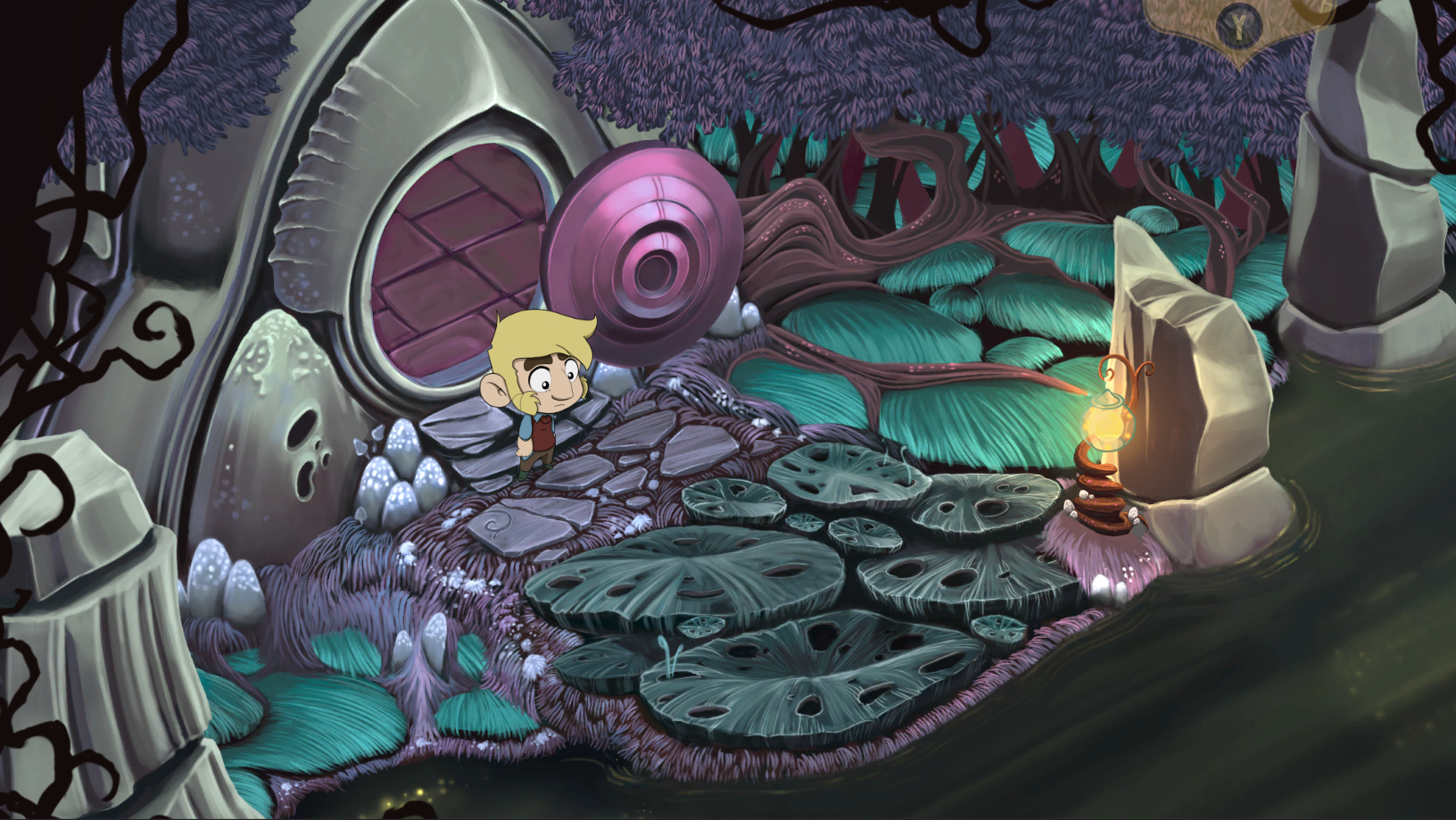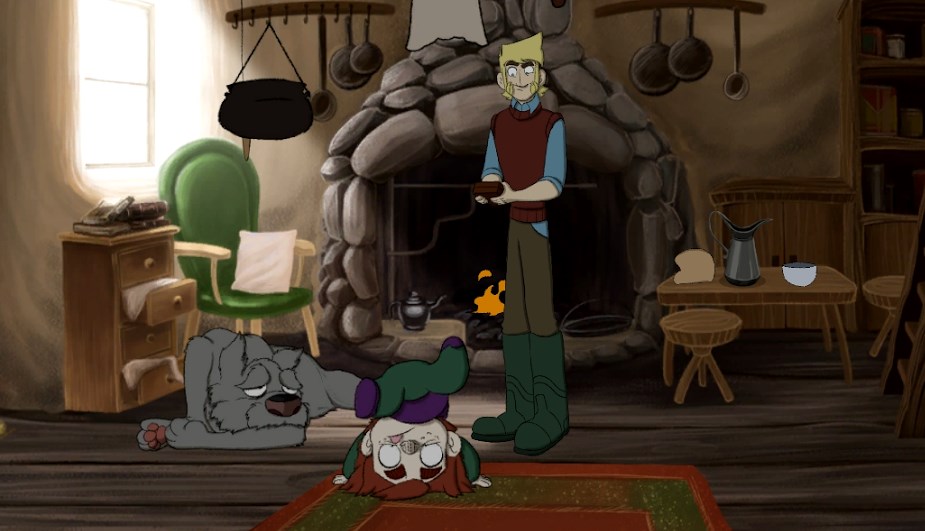The Little Acre is a hand-drawn adventure game from the creator of Broken Sword
An interview with Pewter Games and Charles Cecil.

The Little Acre is an indie adventure game with a striking hand-drawn art style that’s set for release on PC on December 13. It’s being developed by Pewter Games, a small studio based in Dublin, Ireland, and its executive producer is Charles Cecil, creator of the Broken Sword series. I talked to Cecil and Pewter co-founders Ben Clavin and Christopher Conlan about what we can expect from the game.
“It’s a story about a man and his daughter who live in rural Ireland in the 1950s,” says Conlan. “At the beginning of the game you play as the father, Aiden, who realises that his own father has gone missing. He’s a crazy inventor, and he looks for him in his workshop and finds these unusual machines. And then he ends up being transported to this strange fantasy realm.”
Conlan says the game is inspired by escapist fantasy films from the ‘90s like Labyrinth and The NeverEnding Story. “The kind that start in the mundane real world before the characters are thrust into some kind of fantastical adventure.”
“Everything is hand-drawn,” says Clavin. “We’ve gone back to a Disney/Don Bluth animation style. It’s all animated frame by frame. It’s really tedious and hard to do, but it gives the game extra personality. It also gives the animators a lot of freedom to express themselves, so even something basic like opening a door can have a lot of character.”
Adventure games haven’t changed much over the years, and it’s still something of a nostalgic genre, but Pewter want to make sure The Little Acre doesn’t fall into same traps that a lot of older games do. “We’re trying to modernise the adventure genre, but without dumbing it down,” says Conlan. “We just want to streamline it for modern audiences. For people who don’t have time to get stuck for ages on overly difficult puzzles.”
“That doesn’t mean we’re making the puzzles really simplistic. For example, in a busy room we’ll limit the amount of things you can interact with. There won’t be red herrings everywhere. And you won’t be one of those kleptomaniac adventure game heroes who picks everything up. Your inventory will be used for essential items that make sense to pick up at the time. And there’s no item combining either.”
I ask Cecil what attracted him to the game. “It looks absolutely beautiful. They’re doing what we were trying to do with Broken Sword back in 1996, and that appealed to me. I joined the project quite late and offered the team advice about things like character motivation and how the story unfolds, but it’s very much their game. But I’m proud to be associated with it. It’s just so joyful.”
Keep up to date with the most important stories and the best deals, as picked by the PC Gamer team.
“Charles’ legacy is a great asset,” says Clavin. “The hint system is pretty much lifted straight from Broken Sword, and there are a few homages to it in the game. His work has been a huge inspiration. Chris and I played very different games when we were young, but Broken Sword was the first game we both shared a love for.”

“In the game you switch between two characters,” says Colan. “There are two timelines, and Charles was great at helping us shuffle that around a bit to make it clearer. And he even helped us with stuff like how inventory icons should look so they help the player realise that they’re the solution to a problem.”
With Cecil’s long history of making adventure games in mind, I ask him what he thinks the strength of the genre is, and why people still love to point-and-click. “In the early days of gaming, adventures owned narrative,” he says. “Stories didn’t really exist in other genres. Of course, now everything has a story. It’s a reward for shooting people in an FPS. But what adventures did back then, and still do brilliantly now, is they entwine the story with the gameplay. They’re absolutely, inextricably linked, and they drive each other forward. And that’s why people still love these games, I think.”
“They’re accessible too,” adds Conlan. “Anyone with a computer is able to play them. And they’re fun to play with other people too, even if they aren’t gamers.”
There’s always something a great adventure game is remembered for, whether it’s Day of the Tentacle’s time-hopping or Broken Sword’s history-filled plot. I end by asking Conlan what he wants people to take away from The Little Acre. “I’ve been very happy that the things people like about the game are the things we want to get across,” he says. “The art style is obvious. Everyone talks about how great it looks, and the hand-animation. But people have also mentioned the subtleties and personalities of the characters, and the sense of humour, which is very similar to Broken Sword.”
If it’s set in space, Andy will probably write about it. He loves sci-fi, adventure games, taking screenshots, Twin Peaks, weird sims, Alien: Isolation, and anything with a good story.


